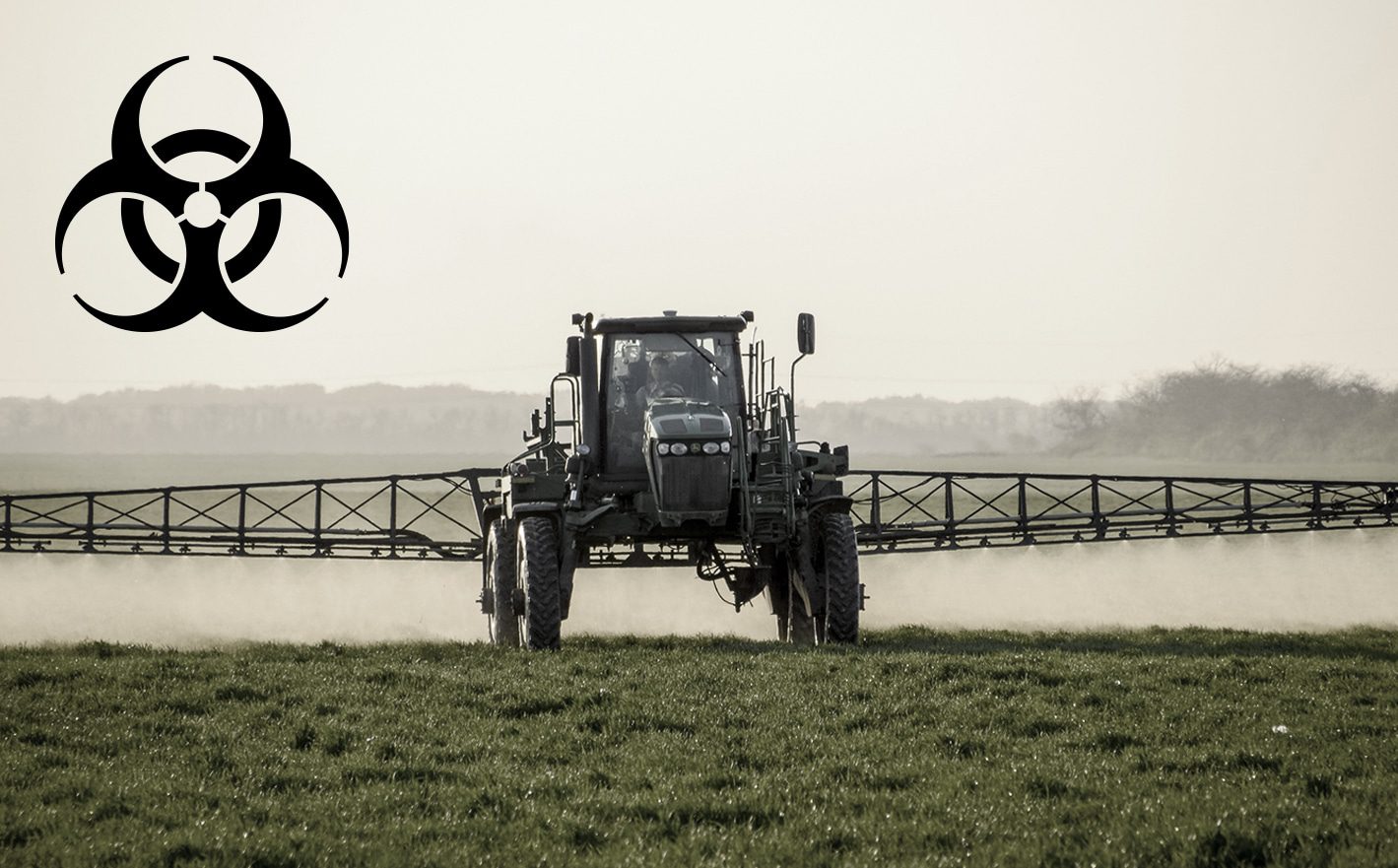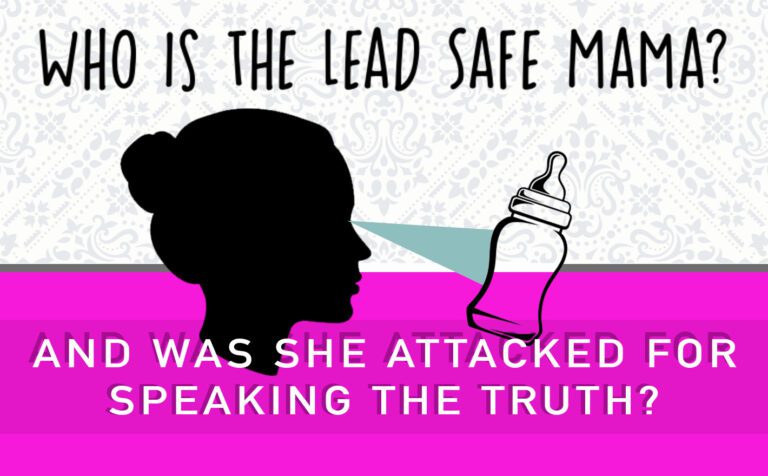After decades of the majority of the population being bombarded with the notion that glyphosate—the active compound in Roundup—is non-toxic, it’s finally becoming common knowledge that it’s anything but.
One of the main reasons why glyphosate’s toxicity is finally going mainstream is because of the success of Dewayne Johnson’s case against Monsanto in 2018, in which he was awarded $78 million after the jury found that the herbicide led him to develop a likely fatal case of non-Hodgkin’s lymphoma.
Brent Wisner, the attorney who led the charge against Monsanto in the Johnson case, has since achieved two more victories against Bayer, the German pharmaceutical company that acquired Monsanto (the same company that invented heroin and also produced chemicals that were used to kill Jews in the holocaust when it was part of the famed Nazi conglomerate IG Farben).
In total, the three individual cases against the multinational pharmaceutical-biotech juggernaut have forced them to pay out a total of just over $2.4 billion. They have since announced that they are prepared to pay out nearly $11 billion more to settle the slew of new cases that have recently sprouted up, which now total over 125,000.
Despite losing over $13 billion, Bayer still claims that Roundup is safe, ignoring a growing body of research that flatly contradicts this assertion and demonstrates that it is in fact a carcinogen.
We have researchers like Dr. Gilles-Eric Séralini—a French professor of molecular biology and founder of the Committee of Research and Independent Information on Genetic Engineering (CRIIGEN)—to thank for much of what we know its ill effects.
Dr. Séralini has been publishing toxicological studies on GMOs and pesticides since 2006, and has made considerable efforts to demonstrate how dangerous they are to the world.
Two of his studies are particularly damning with respect to Roundup and its effects on mammalian physiology.
The Séralini Affair: Monsanto Manipulates a Respected Scientific Journal
In 2012, Séralini et. al published a paper titled “Long term toxicity of a Roundup herbicide and a Roundup-tolerant genetically modified maize”.
The researchers gave GMO corn to both groups, but the control group drank normal water, whereas the experimental group drank water with 0.1 parts per billion of Roundup added to it.
The study was performed for two years, the approximate lifespan of the rats being studied.
This contrasts starkly with Monsanto’s in-house studies, which were typically only performed for 90 days (notably, Séralini claims that nearly all of the ill effects of Roundup show after 90 days).
Here’s what the study claimed to find:
- Females in the treated group died 2-3 times more than controls and more rapidly
- Females developed breast tumors more often than controls
- Liver congestion and necrosis were 2.5-5.5 times higher for the males
- Severe kidney disease was 1.3 – 2.3 times greater
- Rats in the Roundup group had significantly more pituitary gland damage and imbalanced sex hormones
- Males had 4 times more “large palpable tumors”
Needless to say, the study was not well-received by Monsanto or any of its various front groups.
A year later, the paper was retracted by the journal Food and Chemical Toxicology, with editor-in-chief A. Wallace Hayes stating that its methodology was flawed.
Evidence points to foul play, however.
A letter uncovered during litigation against Monsanto demonstrated that Dr. Hayes was a paid consultant for Monsanto. Dr. Hayes, who worked for tobacco giant RJ Reynolds for 7 years, was in close contact with Monsanto higher-ups and was part of a coordinated effort to get the paper retracted.
Baum Hedland Law, the firm who uncovered it, has this to say about the letter and its relevance to their case:
“This document is relevant and reasonably likely to be used in this litigation as it demonstrates the conflict of interest between Mr. Hayes’ role as a consultant for Monsanto and his vocation as editor for a research journal which retracted a study determining that glyphosate is capable of being a carcinogen. The document is further indication of Monsanto’s pervasive influence within the scientific community which is related to the availability and quality of data on glyphosate used by researchers and regulators to assess the scientific literature in determining the potential carcinogenicity of glyphosate.”
(If you’d like to explore more of Monsanto’s secret documents that were found during the law firm’s investigation, you can find them here)
Given that Monsanto has a rich history of colluding with researchers to further its corporate agendas, this isn’t remotely surprising.
An article in the Guardian by John Vidal claims that this is just business as usual, and that there are multiple precedents for this kind of unethical behavior in the biotech industry:
“…it was a triumph for the scientific and corporate establishment which has used similar tactics to crush other scientists like Arpad Pusztai of the Rowett Institute in Scotland, who was sacked after his research suggested GM potatoes damaged the stomach lining and immune system of rats, and David Quist and Ignacio Chapela, who studied the flow of genes from illegally planted GM maize to Mexican wild maize.”
In 2014, the paper was republished in Environmental Sciences Europe, a peer-reviewed journal that was established in 1989 and is more oriented toward exploring environmental wellness than serving the corporate agendas of biotech conglomerates.
Séralini vs. the Biotech Empire: Chapter 2
One of the more commonly cited criticisms of Séralini’s research was that it used too high of a dose of Roundup, so in a follow-up study in 2017, his team used an extremely low dose that was far below the EPA-set maximum daily intake for adult humans (relative to body weight).
Despite using such a tiny dose, the animals in the study were still profoundly affected by Roundup.
The study, titled “Multiomics reveal non-alcoholic fatty liver disease in rats following chronic exposure to an ultra-low dose of Roundup herbicide”, used some of the most advanced techniques available to quantify the genetic and biochemical changes that the pesticide produced.
Multiomics is not a cheap, easy way to do a study.
It’s basically the most expensive, cutting-edge way to do research of this type. A colleague of mine once referred to this as a “bomb-proof” experimental design, meaning that it would be extremely difficult to refute because of the lengths to which the authors went to measure so many parameters.
Aside from the impressive technology employed by the study, the other most salient feature is the incredibly low dose: only 4 nanograms per kilogram of body weight.
A large adult rat can weigh around 500 grams, or half a kilo, which means that these animals were receiving somewhere in the ballpark of 2 billionths of a gram [0.000000002 grams] per day.
To put that in perspective, a single grain of salt might weigh somewhere in the neighborhood of half a milligram. Doing a little bit of quick math, we can conclude that a single crystal of Roundup about the size of a grain of salt would be sufficient to perform this study on about 340 rats for two years.
So, when the authors say “ultra-low dose”, they truly mean it. Here the authors explain their microdosing rationale:
“…It should be noted that most results from these (glyphosate) toxicity studies were obtained at doses far greater than general human population exposure. Doses tested were typically over the glyphosate acceptable daily intake (ADI), which is currently set at 0.3 mg/kg bw/day within the European Union (1.75 mg/kg bw/day in the USA).”
This quote sheds light on just how differently Europe and the United States tend to behave when it comes to protecting their citizens against chemicals. Why is it that the acceptable daily intake of glyphosate is almost 6 times higher in the United States than it is in Europe, given that both countries have access to the exact same toxicology science?
In the United States, it’s considered safe to consume 1.75 mg/kg of Roundup per day, which is over 400,000 times more than what they gave these animals.
Let that sink in. The Séralini team gave these rats 1/400,000th the amount that we’re allowed to consume in the US.
So what happened to the rats? In the words of the authors:
“Proteins significantly disturbed…were involved in organonitrogen metabolism and fatty acid Beta oxidation. Proteome disturbances reflected peroxisomal proliferation, steatosis and necrosis. The metabolome analysis…confirmed lipotoxic conditions and oxidative stress by showing an activation of glutathione and ascorbate free radical scavenger systems. Additionally, we found metabolite alterations associated with hallmarks of hepatotoxicity…disturbances showed a substantial overlap with biomarkers of non-alcoholic fatty liver disease…and thus confirm liver dysfunction resulting from chronic ultra-low dose [Roundup] exposure.”
Does most of this sound like Greek? No worries. Allow me to translate and summarize.
After being given extremely low amounts of Roundup for 2 years, the rats were analyzed to determine any changes in their biochemistry or gene expression (which genes are turned on or off).
In total, 673 chemical compounds were looked at, including proteins, enzymes, and a wide variety of other compounds, in order to assess how the pesticide affected normal cell functions.
Over 60 of these compounds were altered in a statistically significant manner, and many of them relate to liver function, for example:
- Triglycerides were significantly elevated, which is strongly associated with liver disease
- Multiple other biomarkers associated with non-alcoholic fatty liver disease (NAFLD) were also elevated (including a compound called N-Methylproline)
- Glutathione was significantly upregulated in order to deal with the toxicity and increased oxidative stress from Roundup (cysteine, the most critical amino acid precursor to glutathione, was depleted)
- The rats’ livers were also examined directly and showed 2.5 times as many anatomical signs of disease versus controls
Some of the other changes were related to metabolism and mitochondrial function:
- Nicotinamide Riboside (NR) was significantly reduced; NR is a derivative of Vitamin B3 (niacin) that converts to NADH, which is essential for mitochondrial function (NR is also one of the most popular up-and-coming anti-aging supplements)
- Mitochondrial fatty acid oxidation was impaired, meaning that the rats’ liver cells were less able to turn fat into energy
Overall, the Séralini team paints a bleak picture of the effects of Roundup on mammals. Combined with the previous studies that the researchers also cite in their paper that have similar findings, the evidence is fairly overwhelming that the pesticide can negatively impact liver and metabolic health.
But, if you’re still not convinced because all of these studies are on rats instead of humans, then this next one should do the trick.
A study published in 2020 in the journal Clinical Gastroenterology and Hepatology measured glyphosate levels in the urine of patients who were diagnosed with Non-Alcoholic Fatty Liver Disease (NAFLD).
They determined that the amount of glyphosate in the urine was directly correlated with the severity of the disease progression. The higher the glyphosate in the urine, the more likely it was that a patient had advanced liver fibrosis or steatohepatitis.
How to Protect Yourself
Clearly, the first thing to do is to eat organic as much as humanly possible.
This can prove difficult, of course, particularly if you’re on the road a lot and thus have to eat out, or if you have a hard time affording 100% organic food (in which case you can use the Dirty Dozen and Clean 15 list from the Environmental Working Group to guide you).
We know from Dr. Séralini’s research that glyphosate is particularly toxic to the liver and requires glutathione in order to be removed, so taking a good liver detox supplement–whether it’s APEX Glutathione, milk thistle, or another product of sufficient quality–is highly recommended.
Amla and Rhodiola have also been shown to support glutathione synthesis, as do several of the B vitamins and certain minerals like selenium.
Glutathione is the single most important antioxidant your body produces in order to deal with the toxic onslaught that it encounters on a daily basis, and the fewer toxins coming into the body, the less of it we need, so learning more about how to reduce your overall exposure to various persistent toxins is extremely important.
Pesticides like glyphosate are also known to disrupt the endocrine system (which I’ve written about extensively), so it’s a good idea to educate yourself about how to take care of your reproductive health as well.
Glyphosate has been found in the urine of over 90% of Americans. If you’re interested in measuring how much is in your body, there are tests available for purchase or through a medical practitioner.
Even if you’re unable to eat entirely organic, increasing the percentage of organic foods you consume is still incredibly helpful. Just do whatever you can to minimize your intake.
These are strange times.
Maybe a few decades from now, children will learn about how things used to be, when one had to pay far more to eat food that wasn’t tainted with poison, and will be shocked in much the same way we are when we hear about how brutal and crazy things were back in medieval times.
One can hope that that day will come sooner rather than later, but until then, we must do everything we can to stay informed and protect ourselves. As more research comes forth on the ill effects of pesticides, perhaps we’ll reach a tipping point at which the majority can no longer be duped into believing that these chemicals are safe.







